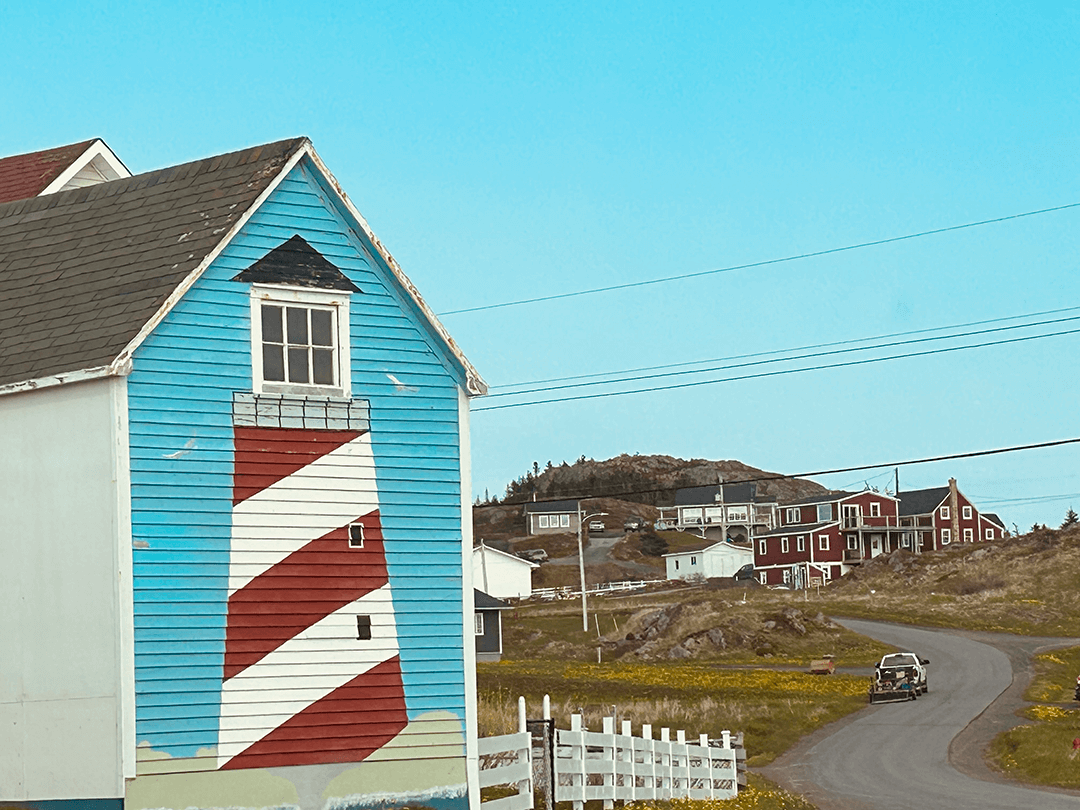Wrapped in cozy clothes and sitting atop a honed tree stump at the most welcoming of dinner-on-the-beach settings, I was definitively in what could only be called a travel trance. Positioned at a weathered wooden table with a blossom-filled pitcher at center, I sipped a glass of naturally chilled Arctic ice water while I waited for the meal – scallops and crab claws morning fresh from the surrounding sea and cooked on an open fire.
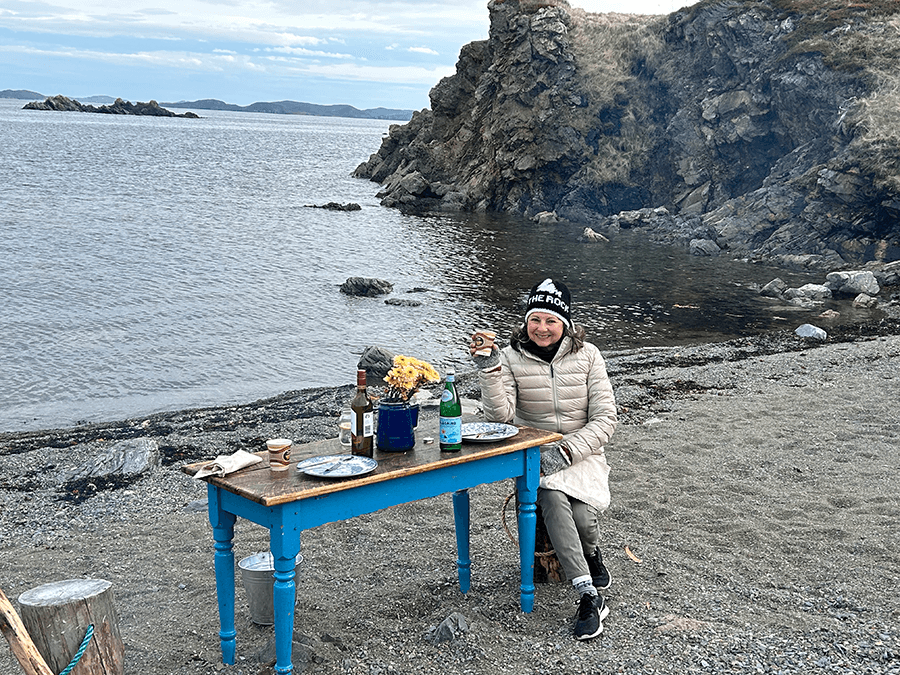
My location: Twillingate. Closer to the country of Greenland than the Connecticut city of Greenwich, remoteness added to the charm. As a northern outpost of Canada’s easternmost province – Newfoundland and Labrador – the region is noted for its sense of tradition, tight connections and travelers who come as guests and leave as friends, much like me. Our meal, a cherished custom, was a delicious reflection of what the area is all about. Called a “boil-up” and arranged through locally owned Wild Island Kitchen, the evening’s culinary guide, Austin Silva, motioned to the water just steps away. “This is our whale trail, so keep a lookout.” I learned that the month of June is when 22 species of whales come to feed off Newfoundland’s coast and remain through August./
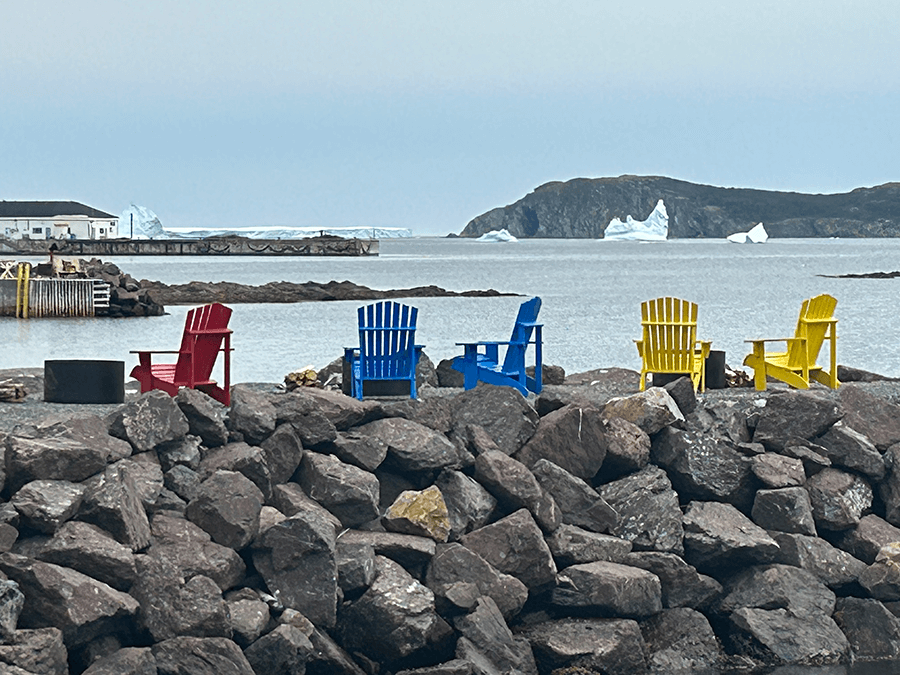
Truth be told, getting to Twillingate was not without challenge or commitment. And though the tiny town of more than 2,000 is 2.5 hours ahead of Eastern Standard Time (as is the entire province) in reality, it is a walk back in time. About 90 minutes from my Newfoundland base of Gander, the journey there was in the rain, simultaneously following directions, watching for moose, dodging potholes and silently willing the car to hopscotch. Though less than relaxing, I confess to at least one Newfoundland-humor-induced smile found on the road – a black and yellow diamond-shaped sign reading: “Rough Road Ahead For . . . Ever.”
Upon arrival it was apparent I’d reached the land of inclement weather. Brightened by boldly-painted homes overlooking its harbor – I think to lighten the spirit induced by seasonal extremes – it was perfectly picturesque.
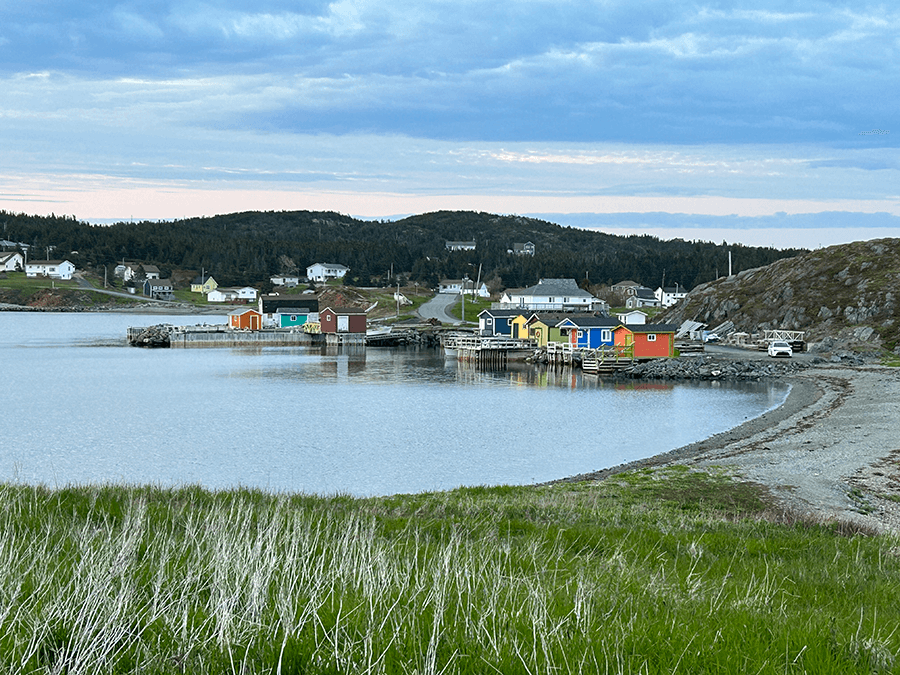
All this said, the goal of my trip went beyond a colorful landscape and distinctive dining. Positioned along Iceberg Alley, huge chunks of frozen water break each year from 12,000-year-old glaciers in the Canadian Arctic and Greenland. Knowing that two to three years later the bergs float toward this coast in spring and early summer, my trip was timed to spot them.
Cue Iceberg Quest Ocean Tours. As we pulled from the dock aboard the 84-passenger Cetacean Quest, albeit slightly off schedule, Captain Barry simply stated: “Don’t worry about time. That’s why we’re one-half hour off here; so, we’re always one-half hour early or one-half hour late.” Preceded by a complimentary lunch of mussels or grilled cheese while waiting, however, no passenger left ‘hangry,’ as we headed into Twillingate Harbour – past Harts Cove and Long Point Lighthouse toward Burnt Island. With numerous icebergs, the game soon became what image each best captured – a sleek yacht, a Giza pyramid and a garden snail were top contenders.

Here, in the land of names like Tickle Point Road and Pippy’s Lane, it was no surprise that Twillingate was casual – no dress code or pretension. And for a real taste of this off-the-map setting, attendance at the New World Island Dinner Theatre seemed mandatory. Reservations were necessary for this seasonal (May – September), six-nights-a-week show that annually entertains 10,000-plus guests and promises “an authentic taste and sound of this outport.” Performers appearing year after year in this production – best described as a combo of Loretta Lynn, Newfoundland folk music and the Broadway musical, Riverdance – are talented. Best part: If in season, lobster is an entrée choice.
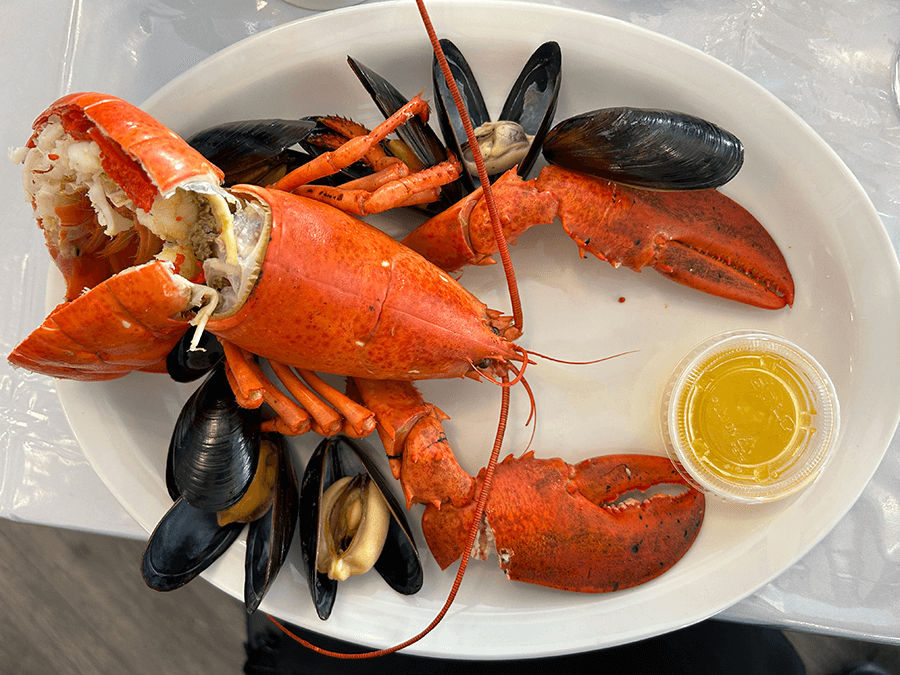
Back on the road, the quest was for more icebergs but this time with fewer passengers. Less than three hours away by car, I arrived at Hare Bay Adventures. In a small boat, a total of four of us set out with Duane and Alex from the tour company – both homegrown and familiar with the setting and its surrounding sea – and began our half-day expedition in search of icebergs and puffins. Best described as whirly birds, puffins are reminiscent of mechanical wind-up toys (it’s said they flap their wings 400 times a minute) – making clear photos the ultimate challenge. In the end, two icebergs were added to the tally (factoid: less than 11 percent of these ice formations are visible above the water). And thanks to our provincial guides, more regional humor was on display. Endearingly underscoring most residents’ allegiance to their homeland, Alex asked and answered, “How to spot a Newfoundlander in heaven? They want to come back.”
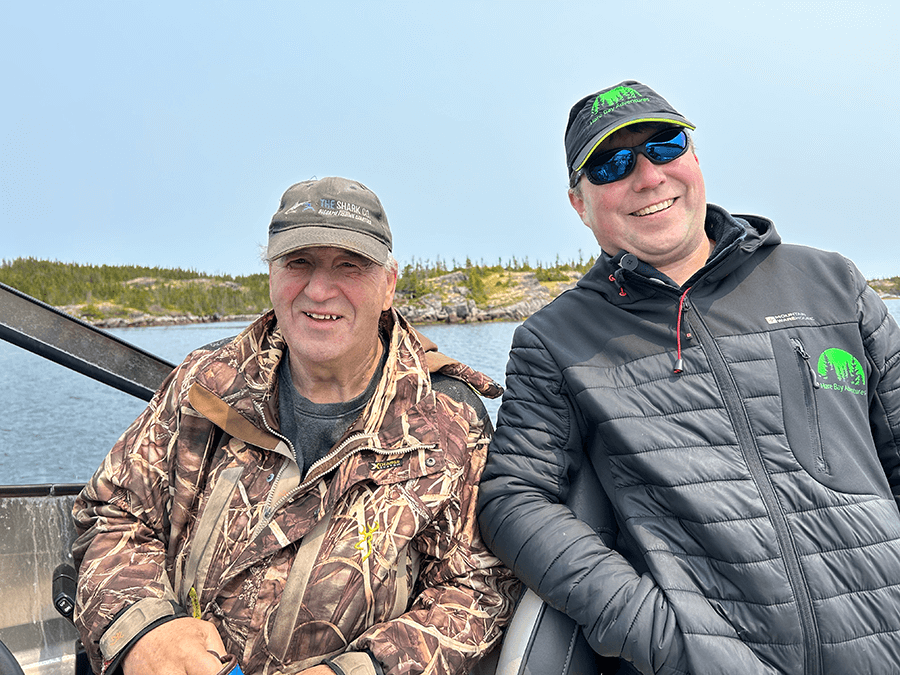
A little history of my association with Newfoundland – specifically Gander. Inspired by the hit musical, Come From Away – which tells the story of how this little known town opened its arms to 38 jumbo jet loads of passengers forced to land on September 11, 2001 – this was my second visit. And while I was familiar with the province’s spirit, this new experience was no less engaging.
My first foray was to get to know the real-life residents on which the play is based – Oz Fudge (colorful policeman), Beulah Cooper (in the play the character Beulah Davis – a composite of two local ladies) and Derm Flynn (mayor of Appleton) – a mission I accomplished. For like-minded visitors, such happenings are real possibilities for anyone who might stop at the Gander Bread Box for a touton (fried bread dough) or Walmart for anything else. And for a guaranteed opportunity, there’s the “Meet the Flynns” experience in the home of Derm and Dianne Flynn that can be booked directly.
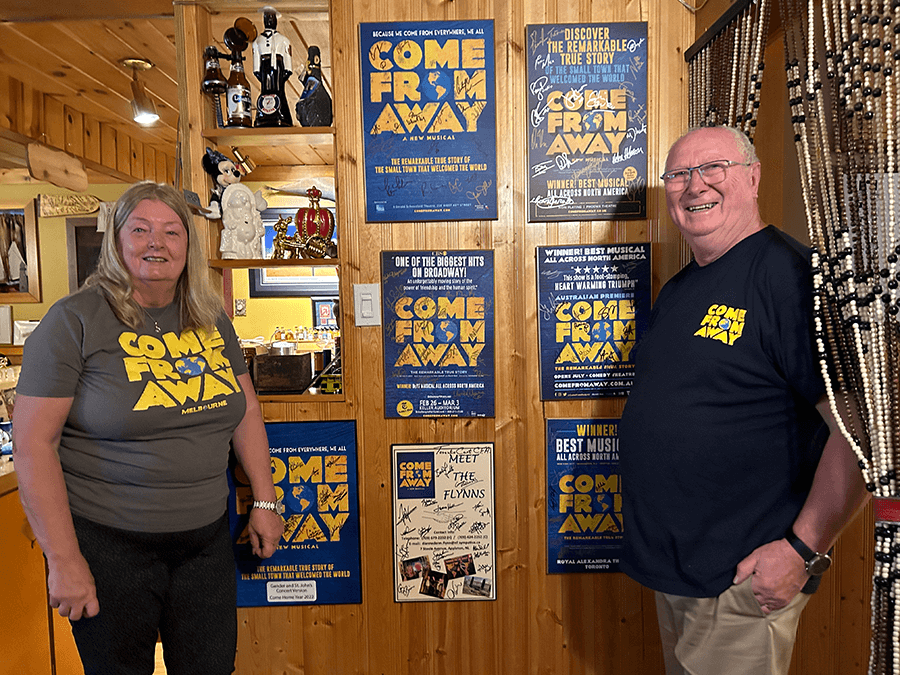
Typical of this part of the world, not only was it possible to reconnect with friends on this visit but to meet new ones, like those at the Norris Arm Heritage Museum – including Linda White, Calvin Downer and more. As members of the outlying community of Norris Arm, which was also significant in the September 2001 establishment of Newfoundland’s now-international reputation for hospitality, museum curator Anne MacPhee Breen reminisced: “I’ll never forget a woman coming up to me and asking: ‘Can you tell me where I am?’” upon disembarking her U.S. bound plane in a strange land under stranger circumstances. And don’t miss the exhibition’s 30-minute video, “Good Hearted Town,” about the role the region played more than two decades ago (tip: bring tissues).
“At the edge of the Western World, there’s a place where the day dawns first,” reads a poster at the entrance of the bright-yellow museum. Still a community where doors are left unlocked at night, keys remain in cars, moose soup is a staple and the expression “M’love” is a greeting for friends and strangers alike, this is the land of down-to-earth sincerity.
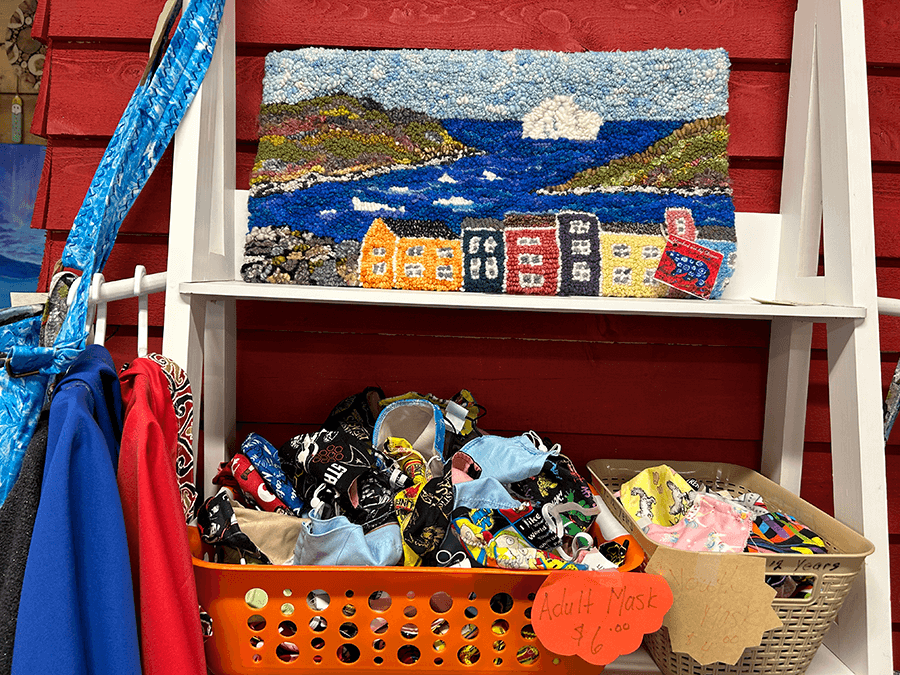
Come From Away – “This is a universal story. It’s about a small town helping the world.” Debuting for the first time in Gander in 2023, it returns in 2024 from July 7 to September 1.
In the end, a local license plate frame best described my sentiment upon return, for I felt as if I had “Come Home.”

